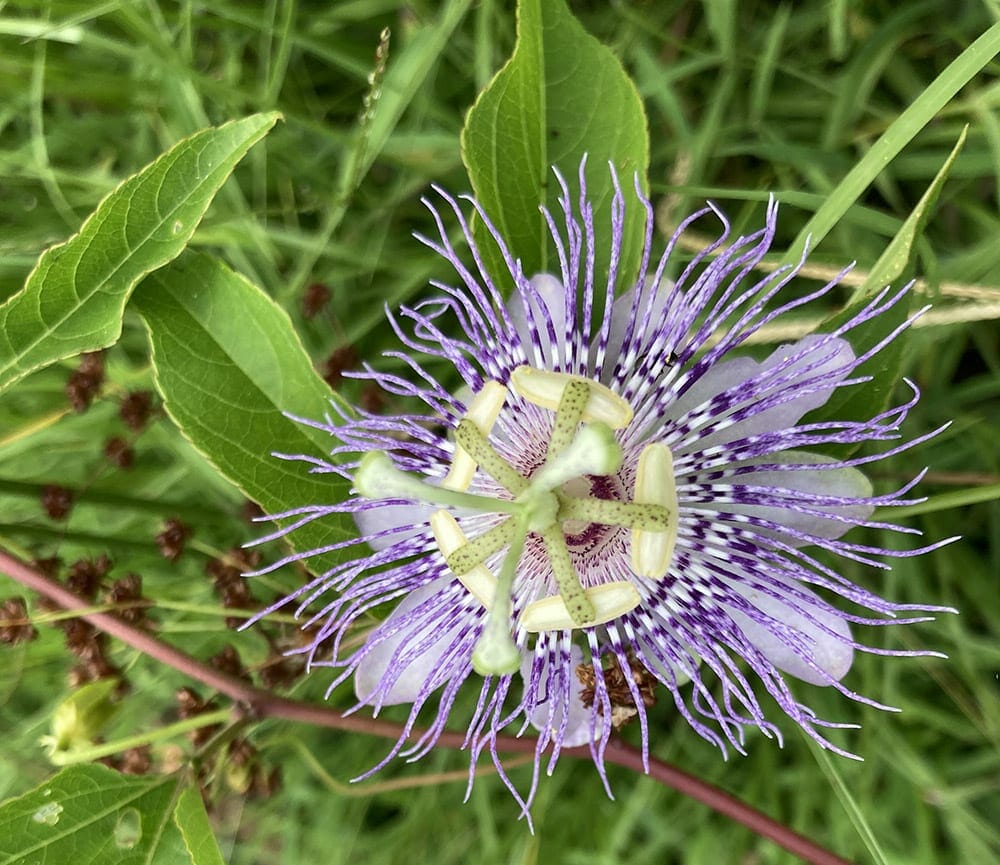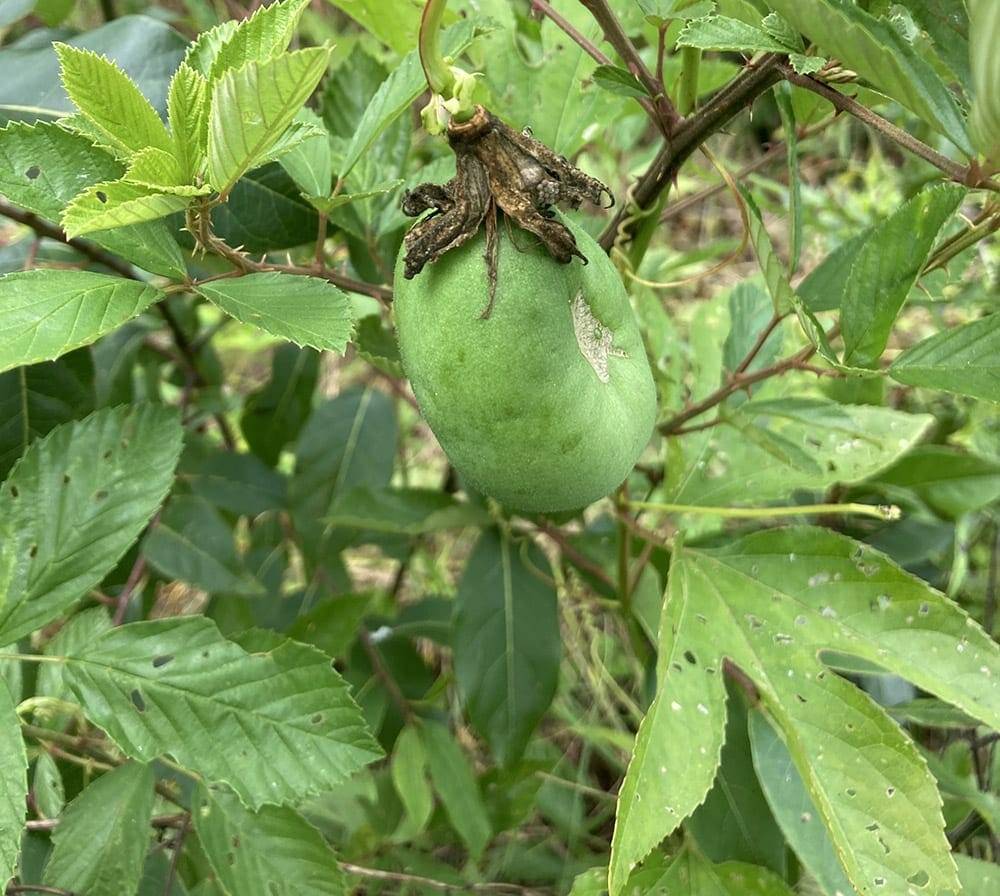If you are searching for a unique, somewhat different, strange-looking flower, consider the passionflower, Passiflora incarnata. This is really an interesting plant. The genus Passiflora has more than 500 species, most of which are native to the tropics, so there are many instances around the world. We are blessed to have several species in our region. The alien-looking flower is actually blooming in Georgia’s coastal plain right now. Around our property, the passionflower is full of surprises; just a few days ago I found two new instances of passionflower popping up. I find those exciting possibilities for new caterpillars and butterflies. Speaking of which, the passionflower is a host plant for the gulf fritillary (Agraulis vanillae) butterfly and many others including the zebra longwing (Heliconius charithonia), crimson patch longwing (Heliconius erato), red-banded hairstreak (Calycopis cecrops), julia heliconian (Dryas iulia), variegated fritillary (Euptoieta claudia), checkered white (Pontia protodice), cloudless sulphur (Phoebis sennae), and gray hairstreak (Strymon melinus).
But there is more to the passionflower than just being a host plant. It has lovely green foliage, medicinal purposes, and can even be used for adult beverages. It is a staple in many butterfly gardens. We moved into our house about two years ago, and we are performing do-It-yourself landscaping around the house. Of course, the passionflower is included and seems quite happy on the south side of our house, making its way through the berm, untrellised and weaving through the other natives.
Care of the passionflower is simple. Passionflowers grow and bloom best when the soil is kept moist; they need about 1 to 1-1/2 inches of water every week. The vine dies back in winter, but during its active season, it grows from 15-25 feet tall and can spread 5-8 feet. It grows in USDA Plant Hardiness Zones 6 – 11. The passionflower likes full sun to part shade and average soil that is well drained. Pick a spot in the garden where the plants may either climb or spread freely. The plants may be propagated from seed or by cuttings. Seeds should be collected in the fall after the fruit has begun to shrivel. They can also be propagated from softwood cuttings, layering, or rhizomes. Another attribute of the passionflower is its deer resistance, a characteristic that becomes important when the deer are roaming freely around your property.
While this article will not provide any details on the medicinal aspects of the passionflower, there is a long history dating before European arrival, when the native Americans used different parts of the plant for various ailments. Native American tribes used purple passionflower for food, drink, and medicinal purposes.
Did I mention the passionflower has fruit? Yes, it is called maypop. It is sweet, yellowish, and roughly the size of a chicken’s egg, and sometimes is used in adult beverages. Last year a customer came to buy some passionflower vines– not for the typical use as a host plant for the gulf fritillary butterfly–but to use in an adult beverage called a Mojito. Apparently, passion fruit juice can be purchased at the grocery store or you can make your own. Be aware, however, the DIY method requires quite a bit of work and is tarter than the sweeter, store bought juice. The customers shared the recipe, so contact the author if you would like to have it.
A question I had was why it was named passionflower. There is quite a story here — the plant of the genus Passiflora has flowers which resemble aspects of the biblical passion. It seems to have first gotten its name in medieval Spain. The Wordsworth Dictionary of Phrase and Fable provides this interesting explanation:
- The leaf symbolizes the spear.
- The five anthers, the five wounds.
- The tendrils, the cords or whips.
- The column of the ovary, the pillar of the cross.
- The stamens, the hammers.
- The three styles, the three nails.
- The fleshy threads within the flowers, the crown of thorns.
- The calyx, the glory or nimbus.
- The white tint, purity.
- The blue tint, heaven.
- It stays open three days, symbolizing the three years’ earthly ministry of Jesus Christ.
Finally, the passionflower is a staple in any butterfly garden, and it can provide an exciting launching pad for bringing many varieties of butterflies to your yard. If you decide to incorporate this into your landscape, it is common to plant them in open or cultivated fields, rocky slopes, thin woods, roadsides, fence rows and thickets. No matter the reason or appeal you have to use the passionflower, it is worthwhile for the beauty of the butterfly, the fondness of the flower, and the intoxicating tartness of the maypop’s nectar. Enjoy it.
References:
Brewer, E. C. (2001), The Wordsworth dictionary of phrase and fable, Wordsworth Reference, p. 826, URL.
Passion Flowers (2020) (Passiflora spp), URL.
Peterson, J. S. (2006). Plant guide: purple passionflower Passiflora incarnata L., URL.
Plant profile for Passiflora incarnata L. purple passionflower, PLANTS Database, URL.
Sweet, K.Top 10 Butterfly Host Plants, Birds and Blooms, URL.


